One of the most common questions we receive at Govihair from clients and stylists is: Can you put bleach on wet hair? The short answer is yes, but the results differ significantly from traditional dry bleaching. Applying bleach to wet strands—often referred to as a “bleach bath” or “soap cap”—creates a diluted chemical reaction. This guide from Govihair will explore the science, safety, and professional techniques to help you decide if this gentle lifting method is right for your hair or extensions.
Understanding the Science Behind Bleaching Wet Hair
To answer the question can you bleach your hair when it’s wet correctly, we need to look at how water changes the chemical process. The condition of your hair—whether it is dry or saturated with water—directly controls how strong the bleach will be and how fast it works.
How Water Interacts With Bleach
When you apply bleach to wet hair, a straightforward chemical change occurs: Dilution.
- Lowering the Strength: Water molecules in your hair mix with the bleach developer. This immediately reduces the potency of the mixture. For example, if you use a strong developer, the water will dilute it to a lower level, making the chemical reaction much gentler on the hair structure.
- Opening the Cuticle: Water naturally swells the hair strand and slightly opens the outer layer (cuticle). Because the cuticle is already open, the bleach can penetrate easily without needing aggressive chemicals to force its way in. This is why the answer to “can you bleach hair wet?” is often yes—it allows for a softer lift with less damage to the hair’s core.

The Role of Natural Oils in Protecting Your Hair
In traditional dry bleaching, stylists recommend leaving your hair unwashed (“dirty hair”) so that natural oils (sebum) can protect your scalp from irritation.
However, wet bleaching works differently:
- Water Replace Oils: Since you must wash your hair to wet it, you remove those natural oils. In this method, the water itself acts as the protective barrier.
- Strand Protection: While natural oils protect the scalp, water protects the hair strand. It keeps the hair hydrated during the chemical process and prevents the bleach from drying out too quickly, which is a common cause of breakage.
Is It Safe to Apply Bleach on Wet Hair?
A common question is can you bleach your hair wet without it falling out? Yes and it is even safer for fragile hair than dry bleaching because the chemical potency is reduced. However, wet hair is in a fragile state; it is more elastic and prone to snapping if pulled. Therefore, while the chemical risk is lower, the mechanical risk (breakage from handling) is higher.
Pros and Cons of Bleaching Wet Hair
Before you grab your mixing bowl, it is crucial to weigh the benefits against the drawbacks.
Key Advantages of Wet Hair Bleaching
- Gentler Lifting: Ideal for shifting 1-2 levels lighter.
- Better Distribution: The moisture helps the product glide, preventing “spotty” results.
- Damage Control: Does bleaching wet hair cause less damage? Yes, generally speaking, because the developer is diluted, preserving more of the hair’s protein bonds compared to a full-strength dry application.

Potential Risks and Drawbacks
- Lower Lifting Power: You will not go from black to platinum blonde in one session.
- Uneven Results: If the hair is too wet (dripping), the bleach can slide off or dilute unevenly.
How to Reduce Damage and Stay Safe
Always use a lower volume developer (10 or 20 vol) and never scrub the hair roughly. If you are bleaching Govihair extensions, remember that they don’t have scalp oils to protect them, so monitoring is key.
Wet Hair Bleaching vs. Dry Hair Bleaching: What’s the Difference?
To choose the right method, you need to understand that can you put bleach on wet hair and can you put it on dry hair produce two completely different outcomes. It is not just about whether your hair is damp; it is about how the chemical environment alters the lifting process.
Here is the breakdown of the key differences:
1. Application and Precision
- Dry Hair: Applying bleach to dry hair allows for precise placement. Since the hair isn’t slippery, the bleach stays exactly where you paint it. This is why balayage artists use dry hair for detailed work.
- Wet Hair: Wet hair provides a slippery canvas. The water helps the bleach spread quickly and evenly, making it ideal for global applications (all over the head) or for blending out harsh lines. However, it is harder to be precise because the product can bleed or run.
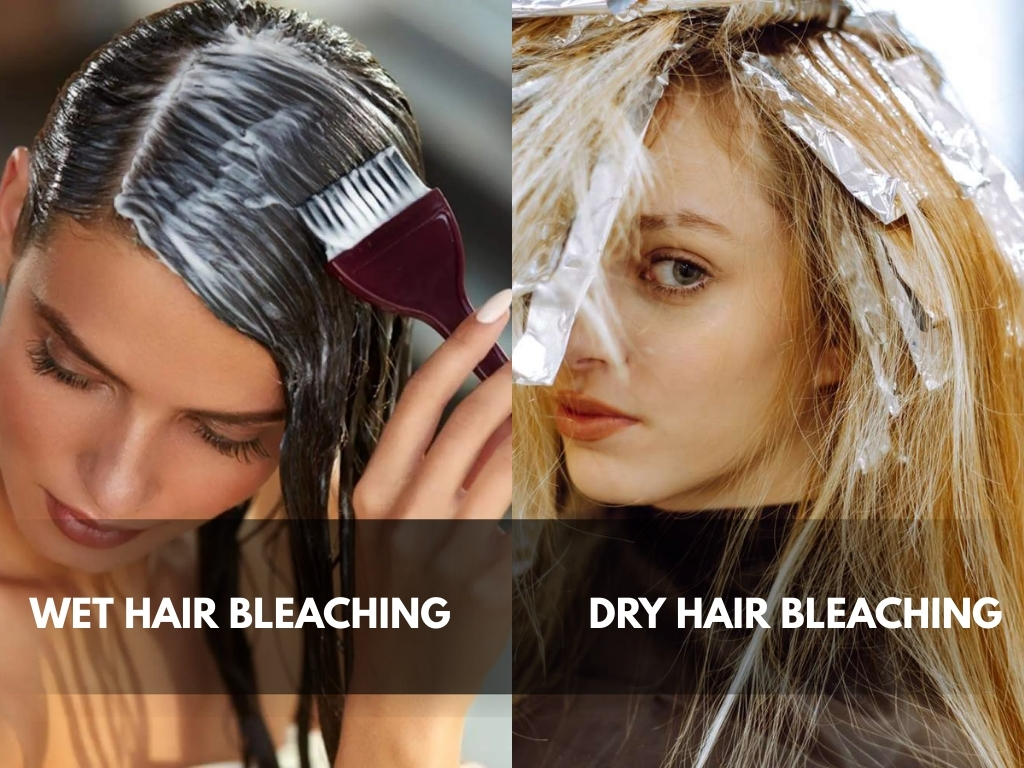
2. Lifting Power (The Main Difference)
This is the most critical factor when comparing bleaching wet hair vs dry hair results.
- Dry Hair (Maximum Lift): Because the developer is undiluted, it works at full strength. Dry bleaching is necessary if you want to go from dark brown to platinum blonde (lifting 3-4 levels or more).
- Wet Hair (Subtle Lift): The water dilutes the developer. Wet bleaching typically lifts only 1-2 levels hair bleach chart. It is perfect for “bumping” a base color or cleaning up a blonde that has become dull, but it won’t give you a dramatic transformation in one sitting.
3. Chemical Reaction and Speed
- Dry Hair: The product dries out faster. Once bleach dries, it stops working.
- Wet Hair: The moisture keeps the bleach “active” for a longer period, but the reaction is slower and steadier. This reduces the risk of “hot roots” (roots processing too fast) but requires you to monitor the hair texture closely.
4. Damage Control
- Dry Hair: Higher risk of damage if left on too long because the chemical concentration is high.
- Wet Hair: Generally safer for fragile hair or chemically treated hair (like Govihair extensions) because the water acts as a buffer, slowing down the breakage of protein bonds.
Summary: If you need precision and power, go dry. If you need blending, color correction, or a gentle transition, the answer to can you bleach hair wet is a definitive yes.
How to Prepare Your Hair Before Wet Bleaching
Preparation is the most critical step in any chemical process. Even though the answer to “can you put bleach on wet hair” is yes, that does not mean you can simply jump in the shower and apply chemicals randomly. Proper preparation ensures the bleach penetrates evenly and prevents unnecessary breakage.
Essential Pre-Bleach Preparation Steps
Instead of guessing, just follow this simple 3-step checklist to create the perfect base:
Step 1: The “Squeaky Clean” Wash
Hop in the shower and use a clarifying shampoo. We need to strip away all the invisible buildup—like old hairspray, dry shampoo, or city pollution. If you skip this, the bleach has to “eat” through that dirt first, which causes patchy spots.

Step 2: Find the “Damp” Sweet Spot
Don’t apply bleach to soaking wet hair! Gently squeeze your hair with a towel—no rubbing!—until it stops dripping.
Why? If it’s dripping, the product slides off. If it’s damp, the bleach glides on perfectly. This is the secret to making can you bleach hair while wet work effectively.
Step 3: Detangle with Care
Wet hair stretches like a rubber band. Use a wide-tooth comb and gently detangle from the ends moving up to ensure a smooth surface without breaking your hair.
Why Conditioning Matters Before Bleaching?
This part confuses a lot of people, so let’s break down the rules clearly:
- The Rule: Skip the Conditioner On the day of bleaching, put the conditioner bottle down.
- The Reason: The “Raincoat” Effect Conditioners leave a slippery film (silicones) on your strands that acts like a raincoat. If you condition right before, you create a barrier that blocks the bleach from entering the hair shaft. This leads to uneven lifting.
- The Exception: When to Condition
Weeks Before: Mask heavily before your appointment to build strength.
Immediately After: Save that deep conditioning treatment for after you rinse the bleach out. That is when your hair is thirsty and will truly thank you for it.
Professional Techniques for Bleaching Wet Hair
When stylists ask “can you put bleach on wet hair,” they aren’t just talking about one single method. In the professional world, we use the “wet canvas” for several specific techniques designed to create soft, dreamy results that dry bleaching simply can’t achieve. Here is how the pros at Govihair use water to their advantage.
Balayage: Soft, Natural-Looking Highlights
“Wet Balayage” (often called Basin Balayage) is a secret weapon for refreshing a look without the commitment of a full foil service.
- The Technique: Instead of painting precision lines on dry hair, stylists apply bleach to damp hair, usually focusing on the mid-lengths and ends.
- The Result: Because the hair is wet, the bleach creates a “watercolor” effect. It lifts the color gently, giving you that sun-kissed “halo” or “tip glow” without any harsh starting lines. It is perfect if you want a low-maintenance blonde.
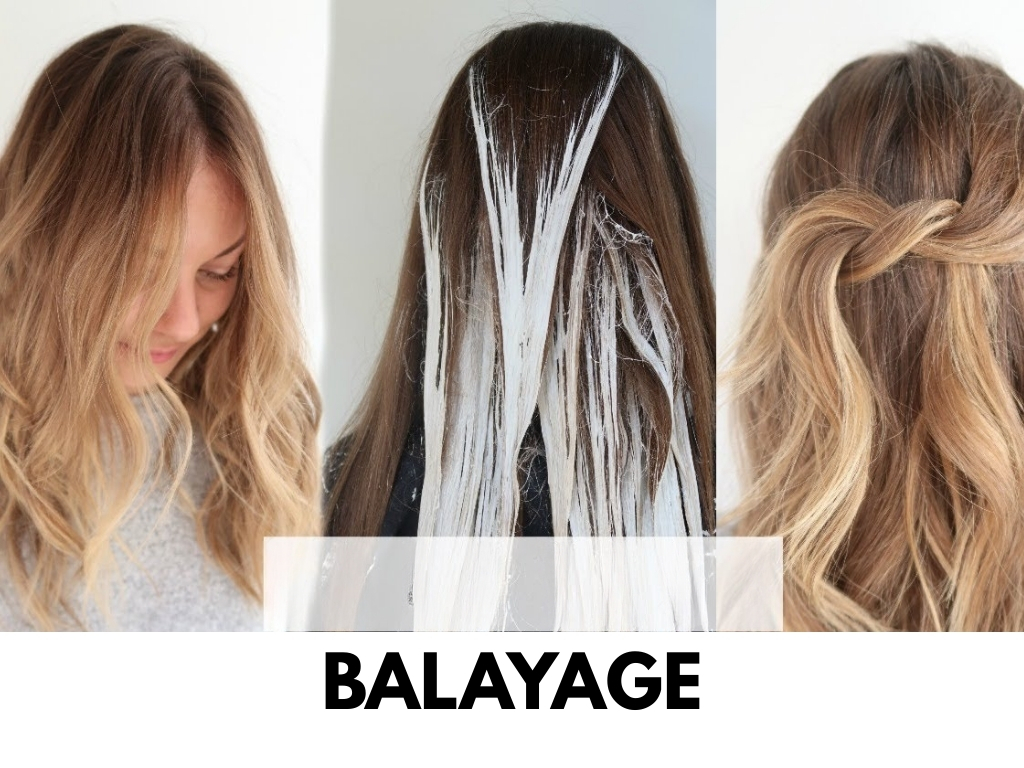
Ombre: Achieving Seamless Gradient Blends
Creating a perfect Ombre (dark roots fading to light ends) on dry hair often requires aggressive backcombing (teasing) to avoid a straight line. Wet bleaching simplifies this.
- The “Melt” Effect: Water acts as a natural blending agent. So, can you bleach wet hair for a seamless ombre? Absolutely, because the moisture allows the bleach to ‘melt’ down the hair shaft, eliminating harsh lines.
- Why It Works: It creates a smooth, diffuse transition from your natural dark color to the lighter ends, eliminating that dreaded “dip-dyed” look.
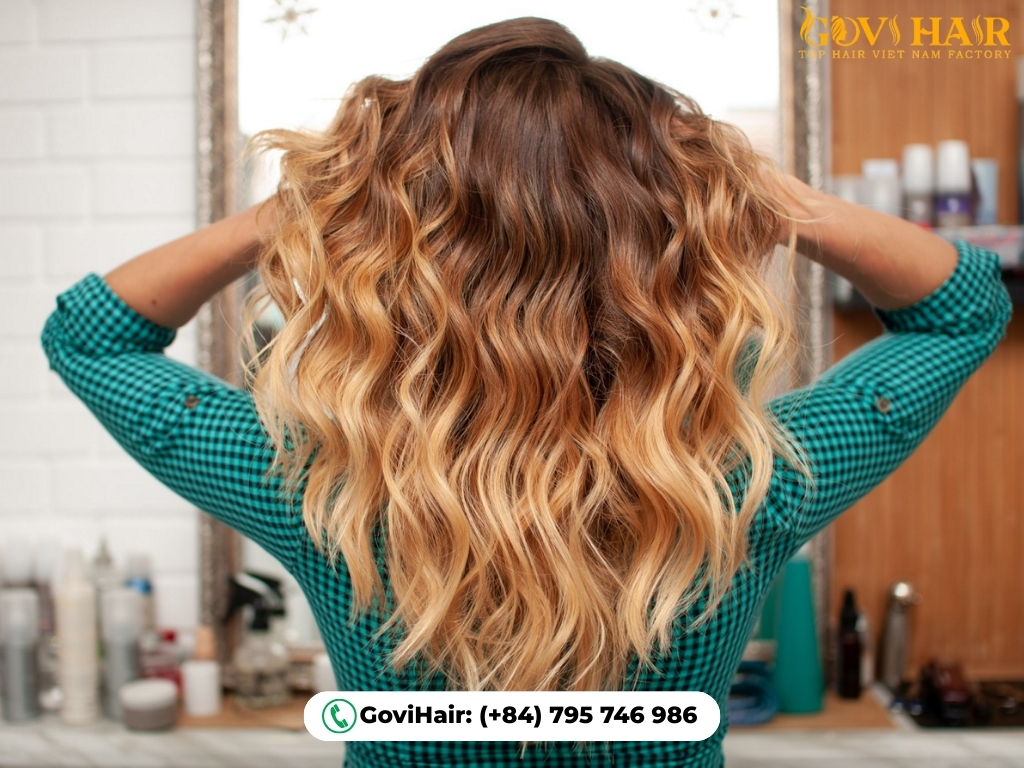
Bleach Bath (Bleach + Shampoo Mix)
This is the most popular technique for DIYers and pros alike, often used for color correction rather than drastic lifting.
- The Recipe: It is a mix of Bleach Powder + Developer + Shampoo (usually equal parts).
- When to Use It: If you are asking “can you put bleach on wet hair to remove color?”, this is your answer. The shampoo helps the mixture lather and penetrate quickly to strip out old toner or semi-permanent dye without frying the hair.
- Safety: It is significantly gentler than a full bleach application.
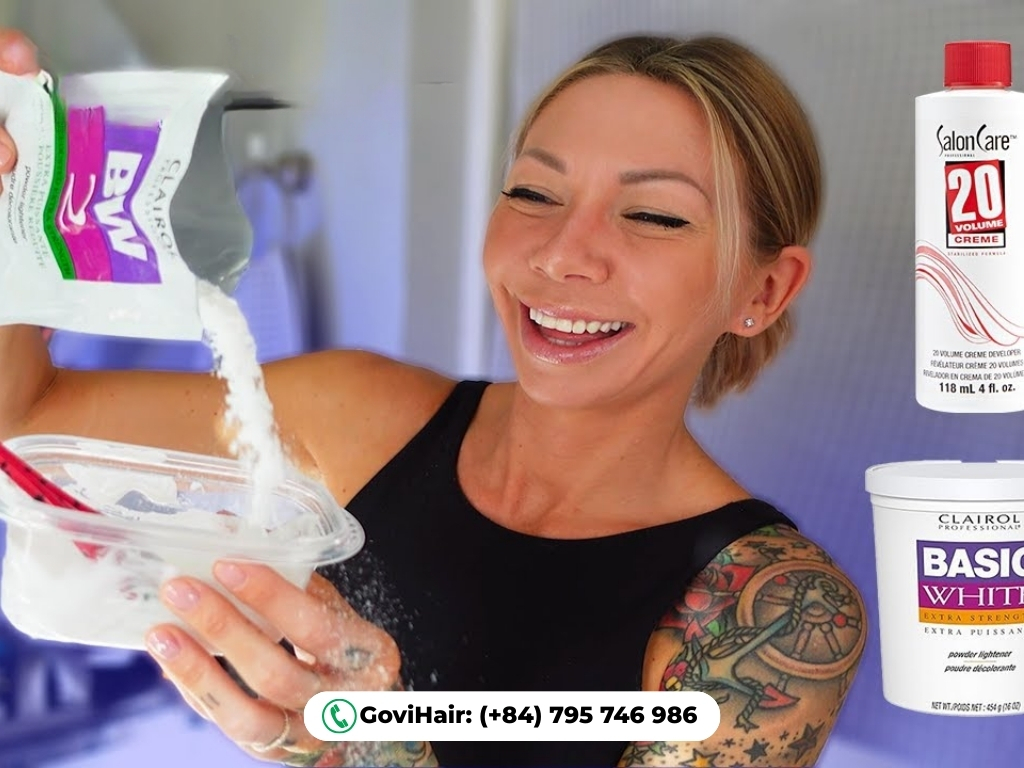
Diluted Bleach Application for Gentle Lightening
Unlike a bleach bath, this method does not use shampoo. It simply relies on the water in your hair to lower the developer’s strength.
- The Concept: You apply a standard bleach mixture directly onto clean, damp hair.
- The Benefit: This is ideal for fragile textures or high-end extensions like Govihair products. In fact, can you apply bleach to wet hair to achieve a quick 1-2 level lift? Absolutely. This method strikes the perfect balance, offering more power than a bleach bath while remaining significantly safer than dry bleaching.
>> Read more: How to Fix Uneven Bleached Hair Easy at Home
Pro Tips From Stylists for Best Results
To ensure safety and success, here are the golden rules we follow in the salon:
- Work Fast: Don’t be fooled into thinking “gentle” means “slow.” Water actually conducts heat, which can speed up the chemical reaction surprisingly fast. Don’t walk away – keep your eyes on the hair constantly to ensure it doesn’t over-process!
- Saturate Fully: Wet hair can hide dry spots. Massage the product in thoroughly (gently!) to ensure every strand is covered; otherwise, you will end up with patchy results.
- The “Elasticity Check”: Every 5 minutes, gently pull on a small strand. If it stretches like gum and doesn’t bounce back, rinse immediately! That is the sign the hair is at its limit.
Wet Hair Bleaching: Do’s and Don’ts
We have covered the science and the preparation. Now, let’s get into the golden rules. As experts at Govihair, we want you to get that beautiful lift without compromising the integrity of your hair strands. Here is your cheat sheet for success.
The Must-Do Steps
- Do a Strand Test (Yes, Really): I know you want to skip this, but please don’t. Especially if you are bleaching expensive extensions, take a small piece from the back and test the mixture first. It’s the only way to know exactly how your hair will react before committing.
- Monitor the Clock Constantly: A common question we get is: How long to leave bleach on wet hair? While the standard is often 15 to 30 minutes, everyone’s hair is different. Check it every 5 minutes. If the hair starts looking pale yellow or feels “gummy,” rinse it immediately.
- Saturate, Don’t Skimp: Wet hair can be tricky because it hides dry spots. Make sure you are massaging the product (gently) into every section. If you miss a spot now, you will have a dark patch later.
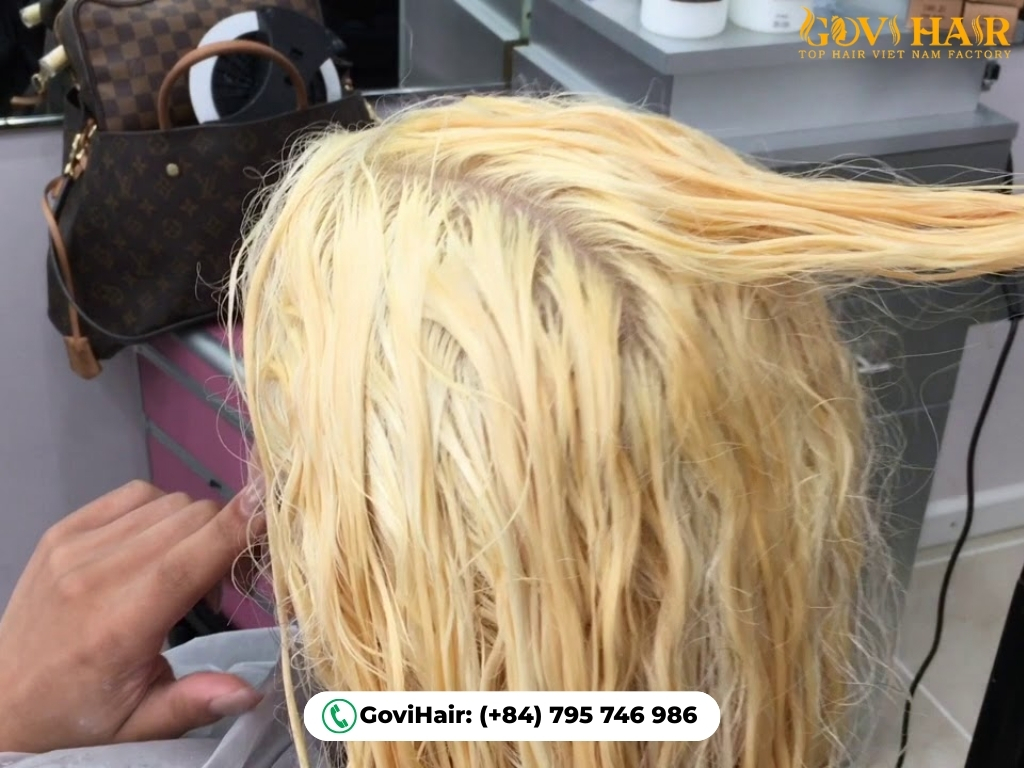
What to Avoid at All Costs
- Avoid Heat Sources: Put the blow dryer away! Adding heat to wet bleach is a recipe for disaster. The chemical reaction is already happening fast because of the water; adding heat will “blow open” the cuticles too violently, leading to breakage.
- Don’t Use High Volume Developer: Don’t get greedy. You might think using 40-volume will make it faster, but on wet hair, it’s unnecessary and dangerous. Stick to 10 or 20-volume. Let the water and the chemical work slowly.
- Don’t Bun It Up Tightly: When your hair is wet and covered in bleach, it is at its absolute weakest state—imagine a wet tissue. If you twist it into a tight bun or use a tight hair tie, you can literally snap the hair off at the root. Just clip it up loosely or let it hang.
Should You Attempt Wet Hair Bleaching at Home?
The short answer is yes, but with a caveat. Because the wet mixture spreads easily (almost like shampoo), it is actually much more forgiving than dry bleaching, making it a safer entry point for beginners. So, can you bleach hair while wet at home successfully? Absolutely, especially if you are just looking to remove old toner or bump your color up one level.
However, know your limits. If you are aiming for a major transformation (like going platinum) or working with expensive investments like Govihair extensions, I strongly recommend seeing a professional. While the wet method is gentler, a stylist ensures you don’t accidentally over-process and ruin the lifespan of your hair. DIY is great for maintenance, but pros are best for transformations.
Bleach Bath vs. Traditional Bleaching: Which One Should You Choose?
Still on the fence? Let’s simplify this decision based on your end goal.
- Choose Traditional (Dry) Bleaching If: You have healthy, dark hair and you want a dramatic transformation (like going from black to platinum or achieving bright vivids). You need maximum lifting power, and wet hair simply won’t get you there.
- Choose a Bleach Bath (Wet) If: You have fragile hair, or you just want a subtle change. If you’re wondering can you put bleach on wet hair to remove color without destroying your natural texture?—then the Bleach Bath is your clear winner. It is the gold standard for stripping out old toner or stubborn semi-permanent dyes gently.
>> Explore more: How To Bleach Knots On Wig: 7 Simple Steps for Beginners in 2025
Post-Bleaching Care: How to Keep Your Hair Healthy
Whether you bleached wet or dry, your hair is now in a delicate state. The cuticle is open, and the protein bonds are fragile. Here is how to nurse it back to health (and keep those Govihair extensions silky).
Deep Conditioning and Repair Treatments
Immediately after rinsing out the bleach, your hair is thirsty. Don’t just use a regular conditioner; use a bond-building treatment (like Olaplex No.3 or K18) or a protein-rich deep conditioning mask. Leave it on for at least 10-20 minutes. This helps “fill in” the gaps created by the chemical process and restores elasticity.
Reduce Heat Styling to Prevent Breakage
For the next week or two, treat your hot tools like enemies. Your hair needs time to settle.
- Air Dry is Best: Let your hair dry naturally whenever possible.
- Low Heat Only: If you must style it, use a heat protectant and keep your tools on the lowest setting. Remember, bleached hair (even wet-bleached) holds less moisture, so it burns faster.
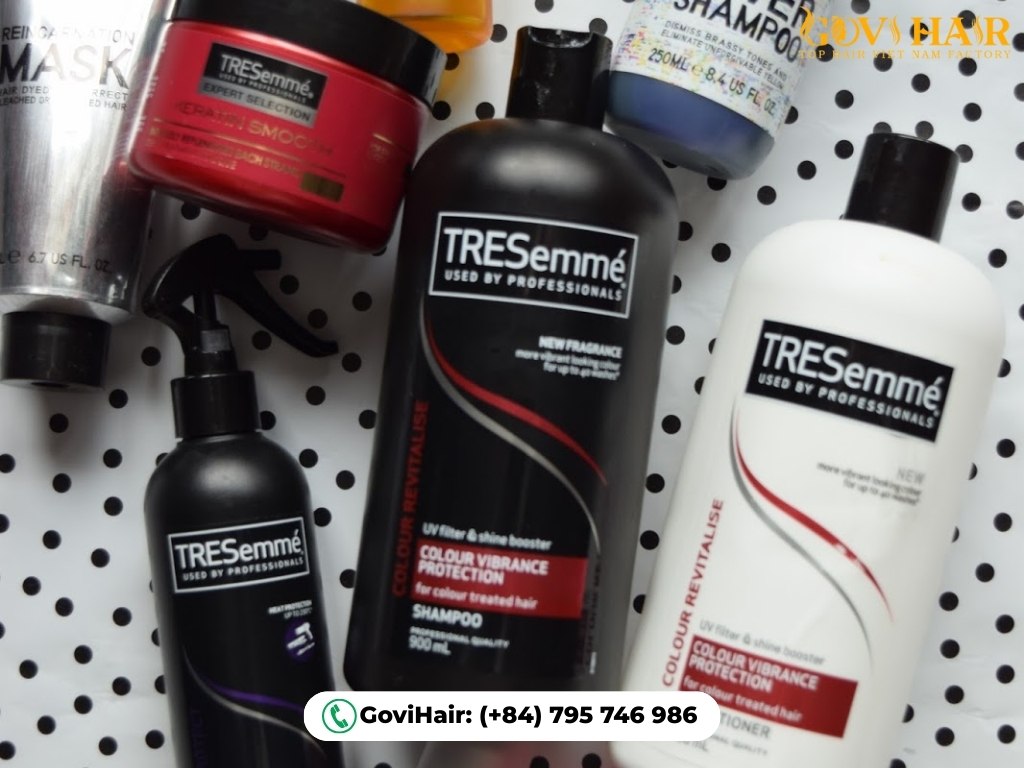
Use Color-Safe and Hydrating Products
Now comes the fun part: toning. Don’t worry about drying your hair first. The answer to can you put hair dye on wet hair after bleaching is a definitive yes, and it’s actually preferred by pros. Applying toner to damp hair allows the color to glide on smoothly and prevents it from ‘grabbing’ too darkly on porous spots.
Similarly, can you dye wet hair after bleaching if you are using a semi-permanent fashion color (like pink or blue)? Absolutely. In fact, semi-permanent dyes often act like a deep conditioner. Applying them to clean, wet hair helps keep the strands hydrated while depositing pigment, giving you a glossy, vibrant finish.
Why Choose Hair from Govihair for Bleaching?
The quality of the hair itself is crucial for safe and effective bleaching.
Govihair provides 100% Vietnamese human hair – raw hair – single donor, unprocessed and chemical-free. Thanks to its natural strength, customers can:
- Bleach hair at home up to #613
- Minimize damage, dryness, and breakage
- Maintain shine and softness after bleaching
This high-quality hair is preferred by salons and international customers for bleaching and lightening services.
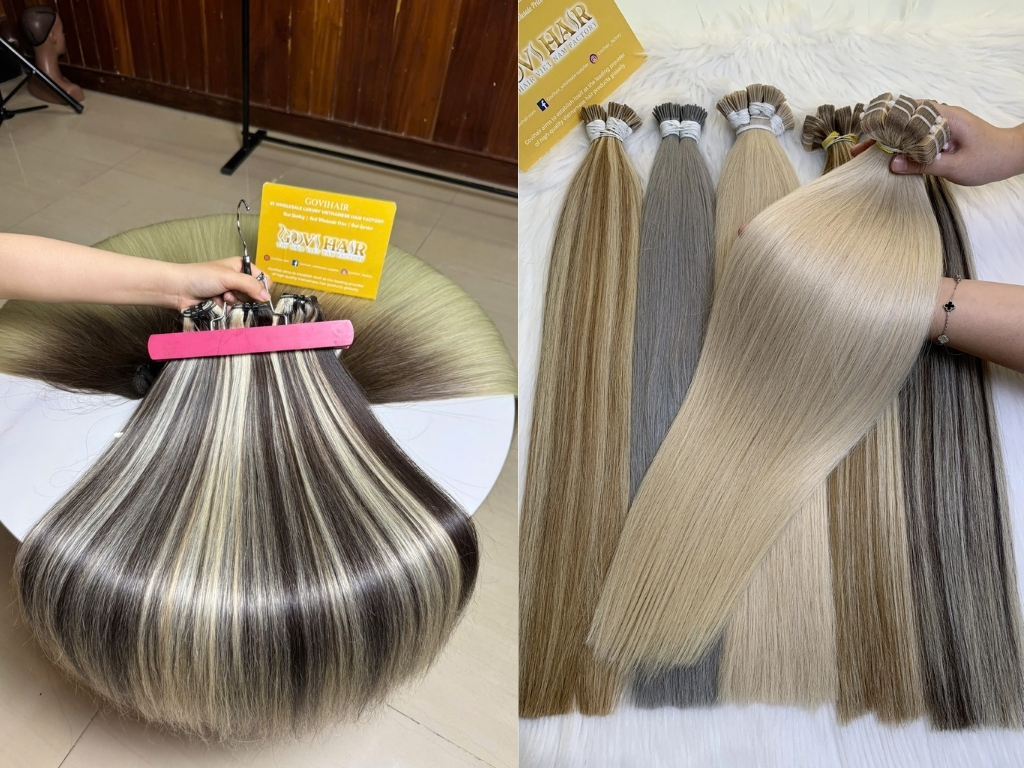
Don’t compromise on your crown—explore Govihair’s collection now to find your perfect texture match!
Chat With Us:
- WhatsApp: (+84)795 746 986
- Email: [email protected]
- Instagram: gov hair vietnam factory
- Tik Tok: govihairvietnam_official
- Website: https://govihair.com/
FAQs
Is it better to bleach wet or dry hair?
It depends on your specific goal. Dry hair is better for maximum lift (3-4 levels) and precision work like highlights, as the bleach works at full strength. Wet hair is better for gentle lifting (1-2 levels), blending harsh lines, or color correction, as the water dilutes the mixture for a softer result.
Does bleaching wet hair cause less damage?
Generally, yes. The water in the hair shaft dilutes the developer, which slows down the chemical reaction and reduces the “shock” to your hair bonds. However, wet hair is structurally weaker and more elastic than dry hair, so it is prone to mechanical breakage if you pull or scrub it too roughly.1
How long should I leave bleach on wet hair?
Because water conducts heat, wet bleach can process faster than you might expect.2 Typically, 15 to 30 minutes is sufficient for a bleach bath or wet application. Do not rely on a timer alone—check the hair texture and color every 5 minutes to prevent over-processing.
Will bleach lift color on wet hair as well as dry hair?
No, it will not have the same lifting power. Wet bleaching is a diluted process, meaning it lifts significantly less pigment than dry bleaching.3 It is ideal for shifting the tone slightly or removing old color, but it will not take you from dark brown to platinum blonde in a single session.
Is putting bleach on wet hair the same as a bleach bath?
They are similar but technically different. A Bleach Bath (or Soap Cap) involves mixing bleach powder, developer, and shampoo together. Applying bleach to wet hair typically just uses the standard bleach and developer mix on a damp canvas. However, both methods use water to dilute the strength and achieve a gentler lift.
Conclusion
In conclusion, the answer to can you put bleach on wet hair is a definitive yes. It is an invaluable technique for anyone looking to lift color gently, remove old toner, or protect fragile strands from the harshness of dry bleaching. While it requires patience—since it won’t make you platinum overnight—it prioritizes the health of your hair above all else. Whether you are refreshing your natural look or customizing your premium Govihair extensions, always remember: healthy hair is the best foundation for any color.









 Ms. Victoria
Ms. Victoria